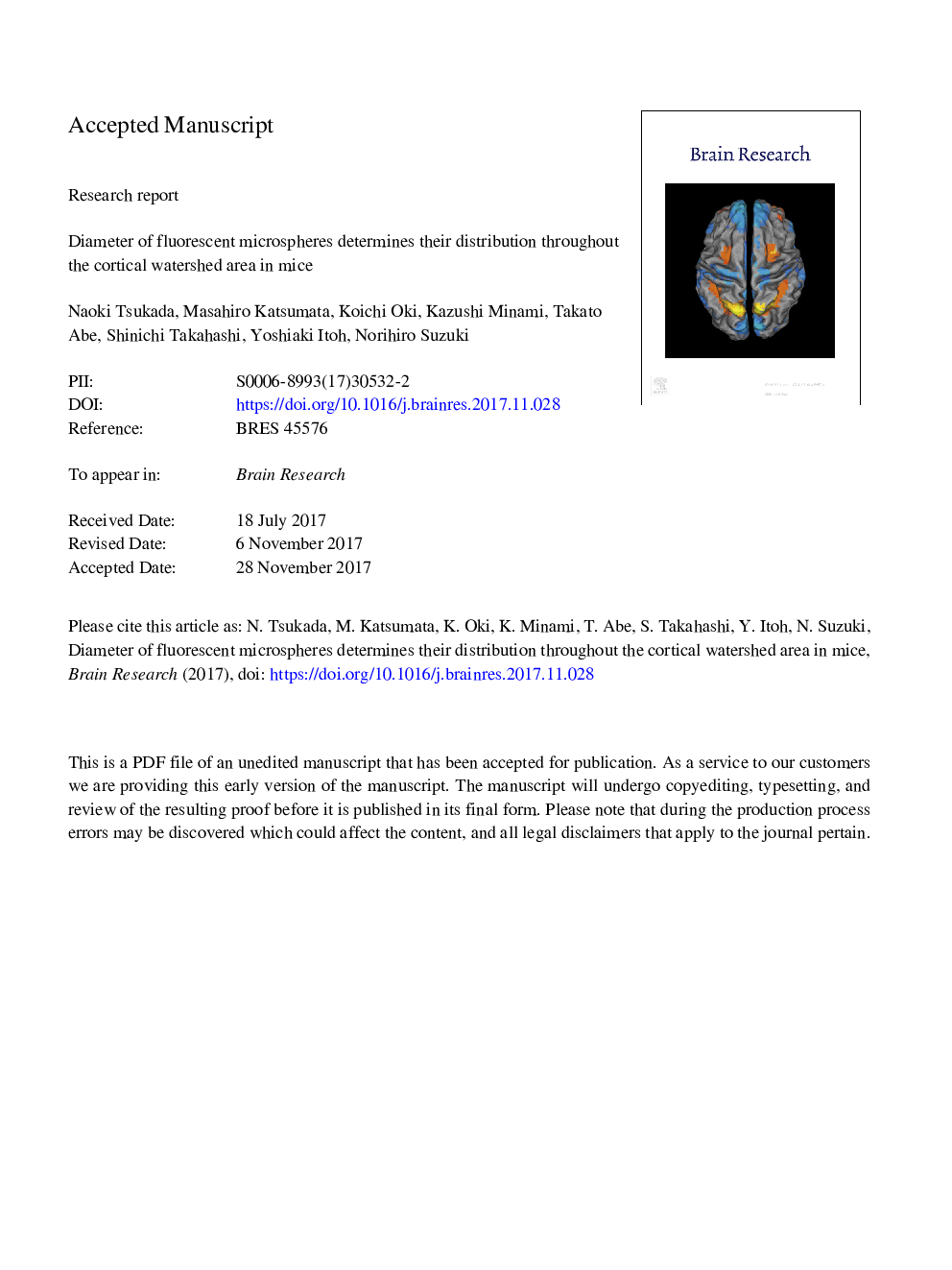| Article ID | Journal | Published Year | Pages | File Type |
|---|---|---|---|---|
| 8839941 | Brain Research | 2018 | 28 Pages |
Abstract
A hemodynamic mechanism has long been assumed to play an important role in watershed infarction. In recent years, however, clinical evidence has indicated that an embolic mechanism is involved. The mechanism by which emboli are trapped preferentially in watershed areas remains unclear. In the present study, we developed a mouse embolus model using fluorescent microspheres with different diameters and evaluated the role of the microspheres' diameters in the generation of a watershed-patterned distribution. We injected fluorescent microspheres of four different diameters (i.e., 13, 24, 40, and 69â¯Î¼m) into the internal carotid artery of C57BL/6 mice either (1) without ligation of the common carotid artery (normal perfusion pressure model: NPPM) or (2) with ligation of the common carotid artery (low perfusion pressure model: LPPM). Left common carotid artery ligation induced reductions in local cerebral blood flow in both the periphery and the core area of the left middle cerebral artery. A greater reduction in the border-zone area between the left anterior cerebral artery and the middle cerebral artery was also noted. After 24â¯h, the brains were removed and the distribution of the microspheres in the brain was evaluated using a fluorescence microscope. The 24-μm microspheres were distributed in the watershed area more frequently than the other microsphere sizes (Pâ¯<â¯.05, ANOVA followed by Tukey's test). Meanwhile, the distribution rates were similar between the NPPM and LPPM models for all microsphere sizes. This study suggested that the distribution pattern of the microspheres was only affected by the microspheres' diameters.
Keywords
MCAICAECAACACCACBFCeAPCACarotid endarterectomyanalysis of varianceANOVACarotid stenosiscerebral blood flowWatershed infarctionanterior cerebral arterymiddle cerebral arteryPosterior cerebral arteryexternal carotid arteryinternal carotid arterycommon carotid arteryCoefficient of VariationFluorescent microsphere
Related Topics
Life Sciences
Neuroscience
Neuroscience (General)
Authors
Naoki Tsukada, Masahiro Katsumata, Koichi Oki, Kazushi Minami, Takato Abe, Shinichi Takahashi, Yoshiaki Itoh, Norihiro Suzuki,
